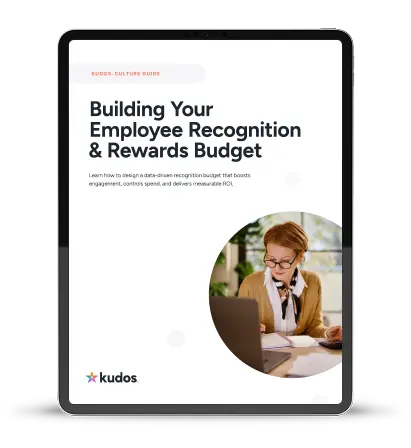Quiet Quitting Explained
Culture
January 29, 2023
Marco Palomino
X min
Culture
January 29, 2023
Marco Palomino
X min

Should you be worried about quiet quitting?
Quiet quitting represents a significant shift in today’s workforce. More than ever, today’s employees are seeking happiness at work and better work-life balance. More and more employees are rejecting the “hustle culture” mentality.
We dove into the history of quiet quitting to provide some advice on what to do next if you’re feeling confused about this trending topic.
Many definitions of quiet quitting have surfaced.
Gartner defines it as “a term that describes employees who are not motivated to put their all into work. They’re not actually quitting, but they have mentally checked out.” Forbes calls it “greater emotional separation or new boundaries between work and life.”
Essentially, it is a rebellion against the “hustle culture” mentality many grew up observing.
In the viral TikTok video, Zaid Khan defines the term as “not outright quitting your job, but quitting the idea of going above and beyond.”
While the TikTok video is from 2022, the concept of ‘quiet quitting’ has existed for decades.

Perhaps the most popular example of quiet quitting is the 1999 film Office Space. In this corporate satire, fictional character Peter Gibbons refuses to work overtime, wants to have a good time and charms two consultants into putting him on the management fast-track.
From a long commute to a boss who is constantly asking him to work weekends, Peter Gibbons stops going the extra mile and encourages others to do the same – rejecting hustle culture.
So, what is hustle culture anyway? The concept is simple – hustle culture means letting work be the driving force in your life, to the detriment of all else. Other people stuck in hustle culture might feel like they must work (long hours) to fulfill their professional goals, and there’s simply no other way.
But, why?
Historically in the US, people who earned the highest salary would work less than the people who earned the least. It makes sense – if you’re making a lot of money, then you can afford to work less.
But something changed in the late 80s; people making the highest salary started to work the longest shifts. The reason? Employees paid by the hour (typically blue-collar workers) were now protected by the Fair Labour Standards Act. From then on, hourly employees were required to be paid overtime.
At the same time, employers hiring salaried workers, typically in white-collar professions, began to glamorize the idea of workaholism. These workers would work unpaid extra hours to achieve their targets and professional goals.
Hustle culture promotes “always staying on,” and that mentality can lead to burnout.
Today, according to Deloitte, almost 80% of people have experienced burnout at work.
With the impact of globalization and automation, a wave of mergers and acquisitions started to happen. Afraid of getting laid off, people were bound to work harder to demonstrate their role was indispensable. This fed hustle culture, and subsequently, burnout culture.
When Millennials entered the workforce, they started to advocate for better work-life balance and a focus on wellness. Tired of seeing their parents working at companies with poor cultures, this generation fought for the flexibility and benefits we see in today’s job market.
A study done by PWC proves this, revealing that Millennials demand better work-life balance. That said, this generation won’t just accept a position for a high salary, they also want purpose, and will make sure that companies align with their values before they accept a job. What's more, with record-high employment rates, they can be choosy.
Did Millennials or Gen Z start the quiet quitting trend?
Both generations seem to rebel against the hustle culture mentality. According to Deloitte, Gen Z also craves more purposeful and flexible work with a particular focus on their mental health.
But employees aren’t just refusing to work overtime or weekends; some are unmotivated and disengaged during regular working hours.
According to Gallup, almost 85% of employees worldwide are not engaged at work. In some cases, quiet quitting could arguably be another form of employee disengagement.
1. Get to know your employees well
It’s important to understand that each person sees work differently. According to Yale professor Amy Wrzesniewski, there are three different approaches people take to their work.
First, we have the people who see work as a means to put food on the table and pay bills – these are ‘job oriented ’ people.
Secondly, we have people with a ‘career orientation;’ they see their work as a path to a better status in life, so they don't mind putting the extra mile into their work to achieve that.
Finally, we have the people who take it even further. They don’t view their job as a career but instead as a ‘calling.’
While none of these approaches are necessarily good or bad, it’s important for managers to find the right way to motivate each employee to keep them engaged.
For instance, if a person who is job oriented has a family emergency, they will seek support from their employer to take time off to support their loved one. Similarly, if someone is career oriented and feels like they’ve reached their peak at work, you should find ways to develop a comprehensive career development plan with them. Finally, if you have a ‘calling’ employee, be mindful of burnout. While they love their job and find it satisfying, make sure they get the support they need by encouraging breaks and disconnection from work on vacation.
2. Focus on engagement
Employees are disengaged for nuanced reasons, but at the core, they want to feel valued and that their organization cares for their wellbeing.
Recognition is one proven way more companies are opting to utilize to improve their engagement levels. What’s more, it also helps you build a stronger connection with your employees.
According to Gallup, employees are up to four times more likely to be engaged if they experience regular recognition at work.
The key here is to understand that happier employees perform better. As a result, forward-thinking companies are coming to realize that the push toward a more balanced work life has produced benefits for both employees and employers.
With a tool like Kudos, employers can encourage peer-to-peer recognition, allowing people’s hard work to be highlighted in situations where it might normally go unnoticed. The platform allows your team to align their recognition messages to your company values, helping employees develop a better sense of belonging while helping employers measure their engagement too.
3. Take good care of managers
Almost identical to the employee engagement study, today, Gallup reports that only one in three managers feel engaged at work. Taking good care of managers means giving them the resources they need to lead a team properly.
Quiet quitting is a silent scream for managers to build a stronger relationship with their employees, but managers can’t do that if they are feeling burned out.
According to a Harvard Business Review (HBR) article, the most important factor is to build trust. If an employee trusts their manager, they will also feel the organization cares for their wellbeing.
Remember, a trustworthy manager reflects a trustworthy organization. So, encourage managers to take time off, provide training and finally, work towards a culture where managers can get recognized too. Oftentimes, managers get forgotten despite the key part they played in achieving the outcome.
Quiet quitting poses a higher threat when an unhealthy workplace culture is in place.
However, organizations that adapt to newer generations’ demands will see better results than the ones stuck in the past.
By working towards healthy workplace culture, being there for your employees and managers, and praising their achievements through consistent recognition, you'll be well on your way to a thriving, engaged workforce.

A newsletter with the best resources for HR professionals.


Learn how to design a data‑driven recognition budget that boosts engagement, controls spend, and delivers measurable ROI.
Get Your Guide